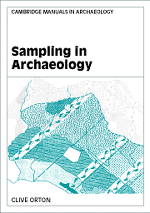Book contents
- Frontmatter
- Contents
- List of illustrations
- List of tables
- Acknowledgements
- 1 All the world's a sample
- 2 A little of what you fancy?
- 3 If this is the sample, what was the population?
- 4 Covering the ground
- 5 What's in a site?
- 6 The answer lies in the soil
- 7 ‘But many sanguine people hope, to see them through a microscope’
- 8 ‘In its depths, what treasures’
- 9 Beyond random sampling
- Appendix
- Bibliography
- Index
6 - The answer lies in the soil
Published online by Cambridge University Press: 05 June 2012
- Frontmatter
- Contents
- List of illustrations
- List of tables
- Acknowledgements
- 1 All the world's a sample
- 2 A little of what you fancy?
- 3 If this is the sample, what was the population?
- 4 Covering the ground
- 5 What's in a site?
- 6 The answer lies in the soil
- 7 ‘But many sanguine people hope, to see them through a microscope’
- 8 ‘In its depths, what treasures’
- 9 Beyond random sampling
- Appendix
- Bibliography
- Index
Summary
Introduction
We now move a step further down in scale, to sampling from archaeological deposits, done with the intention of recovering artefactual or ecofactual material, or geoarchaeological material for the characterisation of the deposit itself. The necessity for sampling is immediately apparent; every deposit potentially contains very many ‘objects’ (embracing all the above categories), some of which may be visible to the eye of the excavator, but a high proportion of which are invisible, either because of their size or because of other characteristics, such as colour or texture (see, for example, Keighley 1973), which make them indistinguishable from their soil matrix. It is simply not feasible to retrieve them all, not only because of the resources needed for retrieval itself, but also because of the resource implications for the subsequent stages of sorting, identification, recording and analysis, and the problem of storage. Nor indeed is total retrieval necessary, since the amount of data that could potentially be extracted is likely to be far in excess of what would be required for any conceivable analysis.
Given that sampling is a necessity, what particular issues are involved at this scale, and how do they differ from those at other scales? First, the issue of bias is ever present, both in the sampling process and in the associated literature, because the material exists across a wide spectrum of sizes, and there is no practical way of recovering it ‘all’ (whatever that might mean).
- Type
- Chapter
- Information
- Sampling in Archaeology , pp. 148 - 176Publisher: Cambridge University PressPrint publication year: 2000



